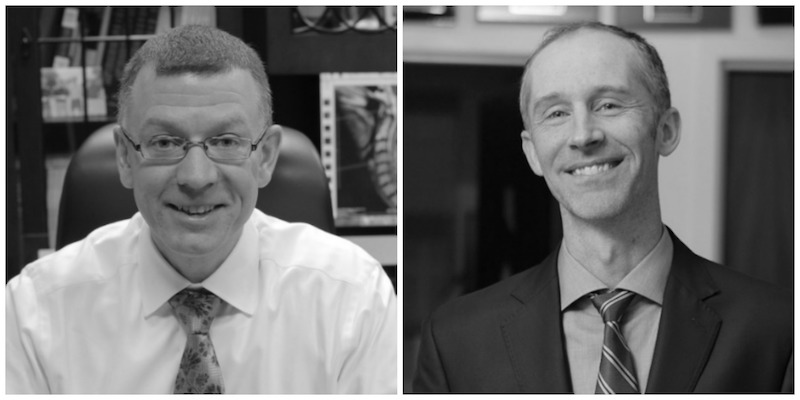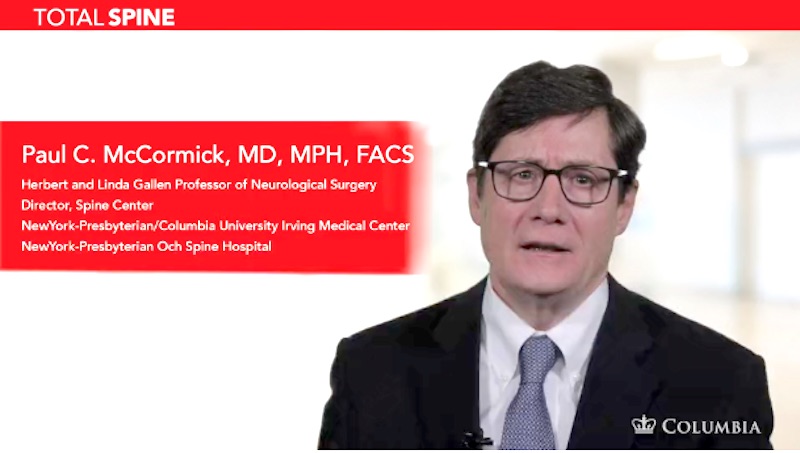How can something be greater than the sum of its parts? Imagine a cake with eight slices. When the slices are all together, you have exactly one cake—no more.
But the same cake also shows that a whole can be greater than the sum of its parts. Maybe the cake is made from flour, sugar, eggs and butter. Alone, each ingredient is outstanding at playing its own part. But combined, they are more than the sum of their individual parts: They work together, and they are fantastic.
The same is true for the team at The Spine Hospital at the Neurological Institute of New York. Each doctor is outstanding in different areas of specialty. But they also have the ability to bring their varied perspectives together, collaborating to create even better results for their patients.
Dr. Richard Anderson and Dr. Michael Kaiser exemplify this synergy. At the conference of the American Association of Neurological Surgeons this May, they co-directed a popular course about surgery at the base of the skull and top of the spine.
Normally, Drs. Anderson and Kaiser have different areas of practice. Dr. Anderson focuses on treating children. He is known as an expert on the pediatric spine—at the same conference, for example, he spoke about pediatric spinal cord injury.
In his practice, he sees many pediatric patients with conditions like Chiari malformation, basilar invagination or os odontoideum. Treatment for these conditions sometimes requires surgery at the skull base or the top of the spine.
Dr. Kaiser’s specialties include spine conditions common along the rest of the age spectrum. Degenerative disease in the neck becomes more common with age, and Dr. Kaiser specializes in many of these kinds of conditions.
Elsewhere at the conference, for example, he spoke about the causes and treatments of cervical spondylotic myelopathy, an age-related condition in the neck that sometimes requires surgery. Dr. Kaiser also sees patients with fractures of the upper spine (hangman’s fracture, odontoid fracture and others) and inflammatory or infectious conditions that affect the upper spine and skull base.
Drs. Anderson and Kaiser brought their different types of experience together in order to design and direct their course, “Cranio-cervical and C1-C2 Stabilization Techniques, Surgical Approaches.” Dr. Anderson (course director) and Dr. Kaiser (assistant director) invited nine other experienced neurosurgeons to act as faculty for the course.
During the four-hour practical clinic, the neurosurgeons and medical students in attendance learned about the diagnosis of conditions in the skull base and neck. Then the directors and faculty covered surgical approaches to the area, special considerations in growing children, and specific useful techniques. Finally, attendees used spine and skull models to participate in hands-on demonstrations.
The pediatric neurosurgeon and the neurosurgeon specializing in age-related spinal conditions brought complementary perspectives to the course. This translated into a more holistic understanding of the area for the course attendees. Ultimately, this understanding will benefit the patients of the course attendees.
But conferences aren’t the only place where this collaboration between colleagues takes place. It happens daily at The Spine Hospital at the Neurological Institute of New York. The highly trained surgeons are each driven to achieve excellence in their specialties, but they don’t stop there: They combine their talents, working together to provide fantastic care for their patients.
In neurosurgery departments, as in cakes, the whole is greater than the sum of its parts.
Learn more about Dr. Richard Anderson on his bio page here.
Learn more about Dr. Michael Kaiser on his bio page here.
Click here to return to The Spine Hospital at The Neurological Institute of New York.



